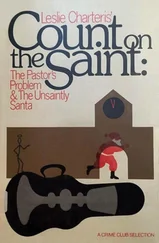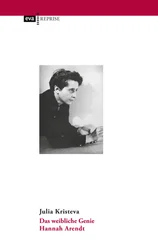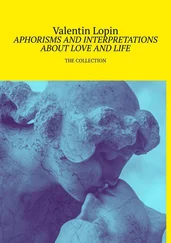54. Lateran Council III: 1179.
55. Lateran Council IV: 1215.
56. Council of Trent: 1545–1563.
57. Antonio Vivaldi: 1678–1741.
58. Jacopo Robusti, Il Tintoretto: 1519–1594.
59. Martin Heidegger, “What Is Metaphysics?” Basic Writings , rev. and expanded ed., ed. David Farrell Krell (London: Routledge, 1993), 108.
60. Immanuel Kant, Critique of Pure Reason , trans. J. M. D. Meiklejohn, part second, I, 3, Canon of Pure Reason (1781; London: Dent/Everyman’s Library, 1945), 458–9.
3. DREAMING, MUSIC, OCEAN
1. Koran, Sura LVII.
2. Alfred Rosenberg:1893–1946. See The Myth of the Twentieth Century , trans. V. Biro (1931; Torrance, Calif.: Noontide, 1983).
3. Marcel Duchamp: 1887–1968.
4. David Bakan, Sigmund Freud and the Jewish Mystical Tradition (New York: Dover, 2005).
5. Letter to R. Rolland, July 20, 1929, in Ernst L. Freud, ed., Letters of Sigmund Freud, 1873–1939 (London: Hogarth, 1970), 389.
6. Wilhelm Fliess: 1858–1928.
7. Letter to W. Fliess, in Jeffrey Moussaieff Masson, trans. and ed., The Complete Letters of Sigmund Freud to Wilhelm Fliess, 1887–1904 (Cambridge, Mass.: Belknap, 1985), 398.
8. Sigmund Freud, Civilization and Its Discontents , trans. David McLintock (London: Penguin, 2002), 10.
9. Letter from Romain Rolland to Freud, December 5, 1927, in Francis Doré and Marie-Laurie Prévost, eds., Selected Letters of Romain Rolland (New Delhi: Indira Gandhi National Centre for the Arts and Oxford University Press, 1990), 87.
10. “Black mud”: Quoted in Carl Jung, Memories, Dreams, and Reflections , Waukegan: Fontana, 1992, p. 150.
11. Sigmund Freud, New Introductory Lectures on Psychoanalysis , trans. J. Strachey (London: Pelican, 1977), 60.
12. Sigmund Freud, The Future of an Illusion , trans. J. A. Underwood and Shaun Whiteside (London: Penguin, 2005), 71–2.
13. William McGuire, ed. The Freud/Jung Letters , trans. Ralph Manheim (London: Picador, 1979), 146.
14. Letter to Anon., in Letters of Sigmund Freud, 1873–1939 , 435.
15. Cf. Paul-Laurent Assoun, “Résurgences et dérives de la mystique,” in Nouvelle revue de psychanalyse , no. 22 (Fall 1980).
16. Freud, New Introductory Lectures , 112.
4. HOMO VIATOR
1. See Marcelle Auclair, Thérèse d’Avila, Œuvres complètes , 2 vols. (Paris: Desclée de Brouwer, 1964); Thérèse d’Avila, Œuvres complètes , (Paris: Éditions du Cerf, 1995).
2. Meister Eckhart, The Complete Mystical Works of Meister Eckhart , trans. and ed. Maurice O’C. Walshe (New York: Crossroad, 2009), 422, 424.
3. “Yearning” or “craving” are attempts to render the Freudian term Sehnsucht : “nostalgia,” “longing,” “ardent desire,” not necessarily addressing the past, but rather the absence of the love object.
4. Life , 3:5, CW 1:63.
5. Jean Baruzi, Saint Jean de la Croix (Paris: Presses Universitaires de France, 1924; Éditions Salvator, 1999).
6. Teresa of Avila, Poems , “Aspirations Toward Eternal Life,” CW 3:375.
7. Testimonies , 58:4, CW 1:418.
8. VI D , 9:2, CW 2:411–12.
9. Letter 177, to don Lorenzo de Cepeda, January 17, 1577, CL 1:476–77.
5. PRAYER, WRITING, POLITICS
1. Life , 10:7, CW 1:108.
2. Soliloquies , 15:3, CW 1:459.
3. Ibid., 17:2, CW 1:461.
4. Letter 219, to Gaspar de Salazar, December 7, 1577, CL 1:583.
5. Theopathy: from “ pathon ta theia ” (cf. Pseudo-Dionysius the Areopagite, Divine Names 2 n, 9), or “to suffer God” as the supreme perfection.
6. Chrétien de Troyes: poet and troubadour, late twelfth century.
7. Life , 11:5, CW 1:112.
8. Life , 10:7, CW 1:108.
9. V D , 2:7, 2:343.
10. Donald W. Winnicott, “Mind and Its Relation to the Psyche-Soma” (1949), in Collected Papers, Through Paediatrics to Psycho-Analysis , (London: Tavistock, 1958), 243–54.
11. Life , 20:9 CW 1:176.
12. Testimonies , 3:1, CW 1:382.
13. Letter 24, to don Lorenzo de Cepeda, January 17, 1570, CL 1:83.
14. Cf. Friedrich Nietzsche, The Anti-Christ , trans. H. L. Mencken (1920; Tucson: Sharp, 1999).
15. Life , 20:9–10, CW 1:176.
16. Testimonies , 3:5–6, CW 1:383.
17. “ Mantener la tela ”: “It was the custom at the joust for one group of supporters to hold up a banner bearing the colors of the group’s favorite knight.” Notes to the Life, CW , 1:474. Cf. M. Alonso, Enciclopedia del idioma (Madrid: Aguilar, 1968), 3: 3909.
18. Life , 18:10–13, CW 1:161–2.
19. Life , 18:14, CW 1:163.
20. “¡Ay, qué vida tan amarga / Do no se goza el Señor!” These two lines at the start of verse 5 in this poem reminds us of Plotinus’s “Leave everything!” ( aphele panta ), associated with Aristotle’s contemplation ( theoria ) and understood as a “denuding” or detachment, as well as a surpassing of all representation ( aphairesis ), and Gelassenheit (abandonment) in Angelus Silesius’s sense; see Selections from The Cherubinic Wanderer, trans. J. E. Crawford Flitch (Westport, Conn.: Hyperion, 1978), 1, 22.
21. Poems , “Aspirations Toward Eternal Life,” CW 3:375.
22. Life , 20–21, CW 1:172–90.
6. HOW TO WRITE SENSIBLE EXPERIENCE
1. The Spanish title Libro de la Vida ( Book of the Life ), was given by the Augustinian friar Luis de León: “The book of the life of Mother Teresa of Jesus and account of some of the graces she received from God, written by her own hand by order of her confessor for whom it was intended.” The autograph manuscript is stored in the library of the Escorial Palace, at the original request of Philip II. It goes by the title: “Book of Mother Teresa of Jesus written in her own hand with the approval of Fr. Domingo Báñez, her confessor, the Prime Chair at Salamanca.”
2. The first draft of The Way of Perfection was completed in 1564 and reworked in subsequent years. Teresa revised the text in 1569, and it was ready for publication by 1579 under this title, chosen by her. However it was not to appear until 1583, after her death, in a highly “corrected” version. It was republished by Fr. Gratian in 1585. In 1588, at last, Luis de León oversaw the release of the original as revised by Teresa.
3. Chapters 1–20 of the Foundations were written in 1573; the next, 21–27, date from 1580; and 28–31 were completed in 1583. Ana de Jesús and Jerome Gratian were responsible for the first publication, in 1610, of the “Book of the Foundations of the Discalced Carmelite sisters, written by the Mother Foundress Teresa of Jesus.”
4. Life , 13:15, CW 1:129–30.
5. VI D , 5:3, CW 2:387.
6. Life , 11:9–10, CW 1:114–15.
7. Life , 11:16, CW 1:118.
8. Way , 19:4, CW 2:108.
9. Life , 11:6, CW 1:112–13.
10. Life , 11:7, CW 1:113.
11. Dominique de Courcelles, Langage mystique et avènement de la modernité (Paris: Champion, 2003), 189–294.
12. Estéban García-Albea, Teresa de Jesús, una ilustre epiléptica o una explicación epilogenética de los éxtasis de la Santa (Madrid: Huerga y Fierro, 2002); Pierre Vercelletto, Expérience et état mystique. La maladie de sainte Thérèse d’Avila (Paris: Éditions La Bruyère, 2000).
Читать дальше












